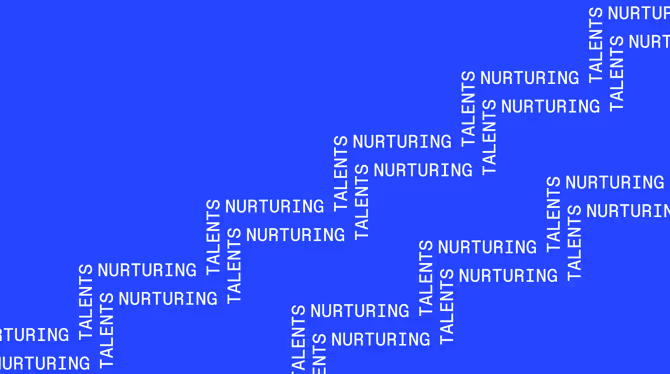AI in employee training: Modern tools for real growth

Career development plan template

Artificial intelligence (AI) is reshaping key parts of the employee experience, including how employees learn, grow, and stay compliant. But for most HR teams, using AI in learning and development (L&D) still feels like unfamiliar territory.
Despite heavy investment, only a tenth of organizations believe they’ve fully developed their AI capabilities. When it comes to training, many leaders know there’s untapped potential — they just don’t know where to start.
From course creation and personalization to automation and real-time analytics, leveraging AI in employee training is helping HR teams train smarter, scale faster, and support growth in meaningful ways. Here’s how your organization can get on board.
How to use AI in learning and development
AI isn’t just changing how we deliver training — it’s reshaping the entire employee learning experience in four key ways.
Streamlined course creation
When people talk about AI in employee training, they usually picture fully automated content. But one of its most practical uses is helping internal subject matter experts (SMEs) build better courses, faster.
With AI authoring tools, SMEs can upload slide decks, standard operating procedures (SOPs), or internal documents and watch them transform into structured, interactive training. This quick process turns fragmented content into consistent, learner-friendly materials.
Personalized learning journeys
One of AI’s biggest draws is its ability to personalize training. It can assess each employee’s skill level, adjust difficulty in real time, and recommend next steps that match their goals.
That level of customization turns a generic training rollout into a smarter corporate training strategy — one that supports real skill development at scale.
Enhanced workflow automation
AI makes it easier for HR teams to automate the time-consuming parts of training. It can identify skills gaps and auto-assign micro-courses, flag upcoming certification deadlines, and send reminders to employees and managers.
It also keeps systems in sync. By connecting HRIS, LMS, and payroll platforms, AI ensures that downstream actions like issuing credentials or adjusting pay happen automatically, without manual follow-up. This automation is particularly valuable for preventing compensation issues that arise when skill certifications, promotions, or role changes don't sync properly with pay adjustments.
Real-time, actionable data insights
Strong corporate training strategies rely on clear, timely data. AI helps HR teams track learner engagement, surface skill gaps, and measure training ROI in one centralized dashboard. Pair training signals with the employee engagement benchmark to connect learning to engagement outcomes. To go beyond completion rates and ROI, run an employee engagement survey to capture how employees feel about growth opportunities - and use that insight to refine your L&D strategy.
Instead of waiting for quarterly reports, HR can monitor real-time signals and adjust employee training programs as needed, making L&D more responsive and effective.
Common challenges of using artificial intelligence for training
AI can bring serious value to corporate learning, but it’s not without friction. HR teams adopting AI in their training programs often run into a few common hurdles. This Workleap webinar breaks down what works, what doesn’t, and how to stay ahead.
Here’s a quick overview of four common challenges and how to solve them.
Inconsistent content quality
Generic or inaccurate output is one of the biggest reasons teams hesitate to use AI tools in learning and development. Misaligned tone, outdated information, or even AI hallucinations can lead to low learner trust and wasted time.
What helps: Look for purpose-built platforms designed for L&D workflows. They come with pre-set prompts, brand-aligned templates, and governance tools that keep content high-quality and on-message.
For ready-made examples your HR team can copy, share our internal guide to AI prompts for HR. For additional AI in HR examples for smb leaders, see the 2025 AI for HR toolkit.
Lack of control over final output
When HR teams use AI to generate content, they often feel like they’re no longer in the driver’s seat. And if the AI pulls from bad inputs or open-source data, the results may fall flat — or worse, be non-compliant.
What helps: Use AI trained on your internal documents, and build in approvals. SME sign-off and layered permissions go a long way toward keeping training aligned and accurate.
Limited adaptability for real learners
Some AI tools promise personalization but deliver a one-size-fits-all experience. Without flexible workflows or insights into learner behavior, it’s easy for content to miss the mark.
What helps: Choose solutions that adjust to learner data in real time, like shifting course difficulty, recommending micro-lessons, or surfacing knowledge gaps early.
Difficulty scaling across teams
HR teams might build a great training program with AI, then struggle to roll it out. Many teams also find that progress slows because of disconnected systems, unclear ownership, or overly complex tools.
What helps: Use AI solutions that integrate cleanly with your existing systems. Seamless LMS, HRIS, and communication tool connections are essential to keeping things scalable.
4 of the best tools for AI corporate training
Here are four tools transforming L&D with practical, advanced AI applications.
1. Workleap LMS
Workleap LMS is built to make learning flow seamlessly. Part of Workleap’s employee experience suite, LMS brings AI-powered structure and simplicity to training programs, from course creation to compliance.
With features like auto-generated course outlines, automated enrollment workflows, and built-in knowledge checks, Workleap LMS gives HR teams full control over training delivery — without the manual drain. Real-time dashboards keep progress visible, helping teams stay audit-ready and on track. It’s intuitive for learners, efficient for L&D leads, and cost-effective at just $4 per user per month.
2. Quizgecko
Quizgecko turns everyday content into interactive learning materials. HR teams can quickly convert text, documents, or web pages into online quizzes, flashcards, podcasts, and study notes. It’s a flexible tool for experimenting with multimedia formats in skill development and training programs.
Free for basic use, Quizgecko’s paid tiers start at $64 annually. It’s ideal for lightweight learning delivery but may require other tools to manage content consistency at scale.
3. SC Training
SC Training (formerly EdApp) is a mobile-first LMS by SafetyCulture. Its “Create with AI” tool helps teams turn plain text or documentation into bite-sized, interactive micro-courses, complete with structured lessons and built-in quizzes.
Free for up to 10 users, SC Training’s paid plans start at $5 per user per month. It’s effective for mobile-first learning but less ideal for complex training needs.
4. ChatGPT
ChatGPT is OpenAI’s generative AI assistant, and it’s increasingly used to support L&D workflows. From generating course modules and quizzes to offering real-time feedback, it helps teams build and refine training content quickly.
ChatGPT’s versatility also makes it a helpful on-demand tutor, translator, or analysis tool for flagging skill gaps and recommending next steps. Many HR platforms now integrate OpenAI’s models, so teams may already be benefiting from ChatGPT’s capabilities without even knowing it.
ChatGPT’s basic features are free, while access to advanced tools like GPT-4 requires a $20 per month individual subscription. Since it’s not purpose-built for L&D, teams often pair it with structured platforms for tracking and compliance.
AI-driven learning that fits your entire employee experience
Workleap LMS brings AI into your learning workflows where it matters most — areas like course creation, progress tracking, and compliance. It’s designed for real-world HR teams that want to scale training without the manual drain.
As part of the Workleap suite, Workleap LMS works in sync with performance, engagement, and onboarding tools. The result? Employee training isn’t just effective, it’s connected. To reinforce that connection, use an employee performance review framework to translate new skills into clear expectations, coaching, and next steps.
FAQs
What’s the role of AI in learning and development?
AI enhances L&D by automating course creation, adapting learning paths to individual needs, continuously assessing skills, and predicting future learning gaps. As adoption grows, the AI training market is projected to expand at a 22.1% compound annual rate through 2030.
How do you keep track of employee training?
HR teams often rely on Learning Management Systems (LMS) to stay on top of training progress. These platforms provide centralized dashboards where managers can track course completions, overdue assignments, and learner progress in real time.
Workleap LMS makes this process even easier by automating enrollments and reminders so teams can stay on track without constant follow-up.
How do you automate employee training?
AI-powered LMS solutions make it simple to automate repetitive L&D workflows. With Workleap LMS, HR teams can automatically enroll teams in required courses, send timed completion reminders, and issue certificates instantly. It also manages recurring requalification cycles to keep employee skills sharp and compliant.
How does AI accommodate different learning styles in the workforce?
AI helps tailor training to meet the diverse learning styles found in the modern workforce. By analyzing how each person learns, AI can adjust delivery formats and content difficulty in real time.
Tools like Workleap LMS use this intelligence to personalize learning experiences at scale, keeping training effective and engaging for everyone.
%20(1).png)

%20(1).avif)


.avif)
.avif)








